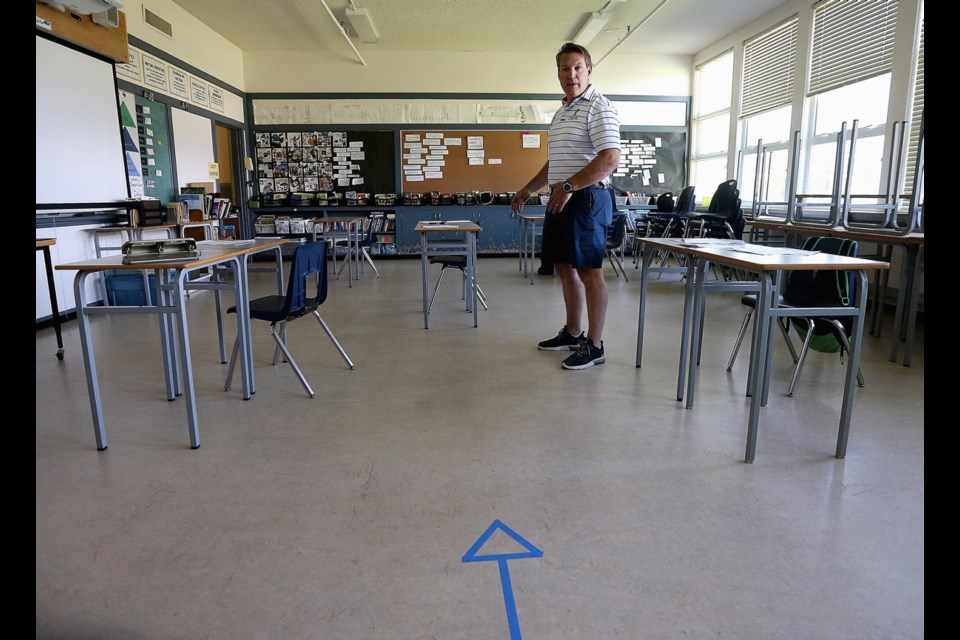One-way corridors, exterior doors used by set groups and the optional wearing of masks are some of the things that Greater Victoria School District students can expect if they choose to return to classes Monday.
Premier John Horgan announced May 14 that sa���ʴ�ý’s school system would be emerging from its COVID-19-related shutdown with a part-time schedule. Attendance is not mandatory and schools will be reopening for June only before the term ends, in hopes of easing a larger-scale resumption of classes in September.
At least half the Greater Victoria district’s 20,000 students appear to be returning, said superintendent Shelley Green, and school will look “quite different.” That will include “very visible protocols” against COVID-19, such as tape on the floors to designate where to go and not to go, she said.
At Lansdowne Middle School, the number of students returning is above the district average, with about 370 of 640 indicating they will be there — close to 58 per cent.
“Every school is different and every community and the numbers coming back and the size of your school,” said Lansdowne principal Sean Powell.
The school has been contact with families during preparations, particularly with video posted through social media, he said.
He said that means the families have already seen the new directional arrows in the hallways and other measures.
Jodi Whiteman has a son in Grade 8 at Lansdowne who will not be returning in June.
“He decided that he is going to opt out of going back to school,” said Whiteman, president of the Greater Victoria Confederation of Parent Advisory Councils. “He just felt that going back for one day a week didn’t make sense for him.
“He’s going to continue on with his at-home studies.”
The “social atmosphere” at school is likely attracting some returnees, Whiteman said.
She said she appreciates that returning to school is optional, at a time when COVID-19 is still a concern. “Some of the parents that I’ve talked to really are not comfortable sending their kids to that environment.”
Those who go back will find class sizes are smaller, Powell said, giving the example of a class that normally has 25 students. If 15 of those students go to school on Monday, they will be divided into “cohorts” of seven and eight, he said.
“Your A cohort might come Monday and Wednesday mornings and your B cohort might come Tuesday and Thursday mornings.”
Powell said that in most cases students will be either with their regular teacher or one they know well, such as a band teacher.
“We’re trying to do it that way so when kids walk in they’re actually connected to that adult.”
He said another preventive step is that exterior doorway use has been streamlined, rather than having students crowding through just one or two main ones.
“We’re going to be allocating a door to three classrooms,” Powell said. “Those three classrooms may only have a total of 24 students that are asked to use this door for entrance and exit.
“What we’re trying to do is reduce the amount of traffic in the hallway to get to one door, and reduce the number of touches that we have when kids are leaving, or coming in the morning.”
Custodians will be cleaning throughout the day, Green said.
She said provincial health officer Dr. Bonnie Henry has not deemed the wearing of masks to be a requirement in schools, but people are encouraged to wear them if it makes them feel more comfortable.
In general, kindergarten to Grade 5 students will be at school two days a week, Grade 6 to 8 students will have two half days and secondary students will be in school for a day a week — but can add time on “a course-by-course, individual basis,” she said.
So if they need help with math or are trying to complete a woodworking course, they can have school access, Green said.
Along with that, many students will continue with the online learning they have done since schools were closed in March, she said.



